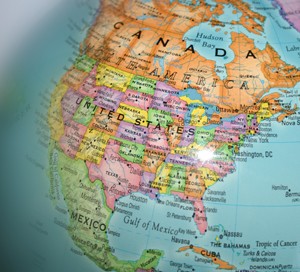10 years on from Lehmans and what has the financial services sector learnt?
The financial crash after the Lehman Brothers collapse saw the biggest global monetary crisis since the end of WW2. It led to a lost economic decade for many – average incomes in the UK still languish far behind their 2008 peak.
15 September 2008, the fall of Lehman sent shockwaves around the world. It was (and still is) the largest bankruptcy of all time. The colossal investment bank fell with $639 billion in assets and $619 billion in debt.
Founded in Montgomery, Alabama by German immigrants in 1850, the firm grew towards the end of the 19th century as America became an economic powerhouse. For an investment bank that survived the railroad bankruptcies of the 1800s, the Great Depression of the 1930s and two World Wars, it was a reckless rush into the doomed subprime mortgage market that proved a fatal error.
What happened?
In the early 2000s, the US housing boom (read, bubble) was well underway. After the dotcom bubble burst around the year 2000, investors began to put their money in real estate, causing its value to rise. In addition to this, in order to widen their customer base, mortgage lenders began to offer riskier mortgages.
Interest rates plummeted and strict lending requirements were abandoned, meaning many Americans were buying homes they otherwise wouldn’t be able to afford under normal circumstances. There was a home-buying frenzy that drove prices up between 50 and 100 per cent, depending on the part of the country.
US bankers had developed the lucrative business of buying up subprime mortgages (high-risk mortgages offered to borrowers with low credit ratings), packaging them together with other mortgages using vastly complicated equations to create derivatives which obscured the actual level of risk present in the security.
It was in this environment that Lehman Brothers acquired five mortgage lenders in 2003 and 2004, including a lender that offered subprime mortgages. At first, Lehman reaped significant rewards from its foray into the mortgages market. Its mortgages business drove record growth – Lehman reported record profits every year from 2005 to 2007.
However, things were about to take a turn for the worse for this finance giant. In the first quarter of 2007, cracks in the housing market were becoming clear. Investors were quickly withdrawing and prices began to fall fast. It was clear that the high house prices were supported by speculators, rather than home-buyers themselves.
When prices started to decline, there was a mass sell-off of mortgage-backed securities. Concerns that problems in the mortgage arm of the business would spread through the rest of the firm caused its stock to suffer the largest one-day drop in five years on 14 March 2007.
Over the next year, the firm remained on the rocks. Hedge fund managers began questioning the valuation of Lehman’s mortgage portfolio and Bear Stearns – the second-largest underwriter of mortgage-backed securities – nearly collapsed. By June 2008, the bank was reporting large losses. Over the summer, Lehman attempted negotiations to a number of potential partners, with the hope of attracting investments. All were unsuccessful.
In September 2008, worldwide equity markets began to plummet and Lehman’s stock plunged to new lows. The firm reported huge losses during the third quarter and Moody’s announced that Lehman Brothers would have to sell a majority stake to a strategic partner in order to avoid a ratings downgrade. These proved a fatal blow, on 11 September stock fell by 42% on a single day. Last ditch efforts to save the bank were unsuccessful and on 15 September the investment bank finally declared bankruptcy.
The financial crisis
Lehman Brothers’ collapse wasn’t the start of the financial crisis. Rather, the fall of the fourth largest US investment bank signalled just how bad things had become and caused US and international markets to roil for weeks afterwards.
For previous years, bank executives had been over-investing their profits (and bonuses) by running down their protective capital, making them increasingly vulnerable to deteriorating market conditions. They had a relatively low amount of stable assets or cash available to sustain them during difficult times. Lehman Brothers, for instance, was incredibly over-leveraged. Its ratio of total assets to shareholders equity was 31 in 2007.
As a whole, the global financial system had been under severe stress for over a year. While Lehman Brothers were allowed to fall, many others were bailed out. JPMorgan Chase & Co, Citigroup and Wells Fargo & Co were bailed out to the tune of $25 billion by the US treasury and this side of the pond RBS received £45.5 billion from the British government. Money that Sir Howard Davies, Chairman of the bank, admits is “unlikely” the government will ever see again.
In the UK, every man, woman and child effectively underwrote the country’s financial sector by £19,271 each. While income inequality has decreased since the 2008 crash in the UK, in America things are worse than ever. In 2016, the median net worth of black families was 30% below pre-crisis levels, at $17,150. The financial crisis ushered in a legacy of poverty for the poorest American families. This begs the question: ten years on, what has the financial world done to prevent it happening again?
How much has global finance changed since 2008?
It is difficult to say…
On the whole, global financial markets haven’t changed greatly since the crash. But, some of the standout practices that caused the financial crash are prohibited or strictly regulated and banks are probably slightly safer than they once were.
Many critics cited a ‘greed is good’ culture, driven by a thirst for bonuses as integral to the financial crash. Bosses and traders were rewarded with cash bonuses for achieving short term goals. Bonuses in the UK have fallen year on year since they peaked at 34% of average total pay for finance workers in 2008. In 2016, they amounted to 22.7% – still a sizable sum – but a smaller sum nonetheless.
After the financial crash, in 2014 the EU introduced a cap on bankers’ bonuses at 100% fixed pay or 200% if they are agreed by shareholders. However, Bank of England Governor Mark Carney indicated in November 2017 that the UK will review a cap on banker bonuses after Britain leaves the EU. Just ten years after the financial crisis, we look set to return to a landscape of unrestricted bonuses.
Contrary to the expectations of many, McKinsey report that global debt has grown by $72 trillion since 2007. Many saw the crisis as a direct consequence of unrestricted borrowing and hoped that the pace of borrowing would decrease. However, much of this debt is from developing countries or corporations within them. Maybe, then, the West at least has begun to see that the pitfalls of unrestricted borrowing potentially outweigh the benefits.
Nowadays, banks may be more resilient to financial crises. International liquidity standards mean that banks must have a higher ratio of equity to debt. This has meant that banks have more capital to absorb temporary losses. As of 2017, US and European banks had on average a Tier 1 capital ratio of 15%, compared to 4% in 2007. Now, it is less likely that an economic downturn would result in widespread government bailouts for banks, as happened in 2008.
However, the financial sector is still voracious for high returns, delivered fast. Many of the senior bankers and bosses responsible for the crash faced little sanction. Most are either retired or in other senior roles. Despite his catastrophic mismanagement, Lehman Brothers’ final CEO Richard Fuld recently made a Wall Street comeback. He is now running a fund manager, Matrix Private Capital. Perhaps he has been forgiven and his past forgotten slightly too quickly. As for the rest of the financial sector, although it may be more resistant to financial crises of the future, there is little to suggest that the culture which caused the financial crisis has greatly changed.
Sources
https://www.investopedia.com/articles/economics/09/lehman-brothers-collapse.asp
https://www.investopedia.com/terms/h/housing_bubble.asp
https://www.theguardian.com/commentisfree/2018/sep/05/ten-years-financial-crash-lehmans-austerity-debt
https://www.bbc.co.uk/news/business-45500384
https://www.independent.co.uk/news/business/comment/lehman-brothers-richard-fuld-financial-crisis-hbos-andy-hornby-james-crosby-rbs-fred-goodwin-a8537411.html
https://www.independent.co.uk/news/business/news/brexit-bankers-bonus-cap-scrap-uk-leave-eu-mark-carney-bank-of-england-review-latest-a8084601.html
https://www.mckinsey.com/industries/financial-services/our-insights/a-decade-after-the-global-financial-crisis-what-has-and-hasnt-changed

